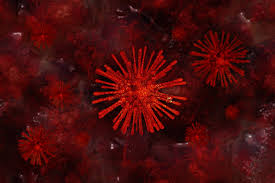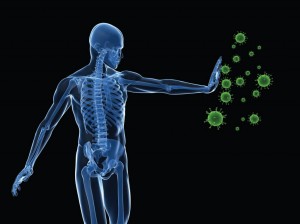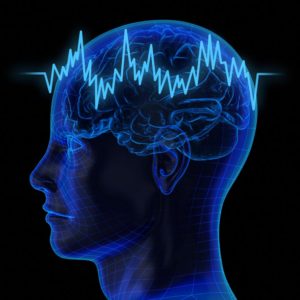Abstract
Opioid withdrawal is a liability of chronic opioid use and misuse, impacting people who use prescription or illicit opioids. Hyperactive autonomic output underlies many of the aversive withdrawal symptoms that make it difficult to discontinue chronic opioid use. The locus coeruleus (LC) is an important autonomic centre within the brain with a poorly defined role in opioid withdrawal. We show here that pannexin-1 (Panx1) channels expressed on microglia critically modulate LC activity during opioid withdrawal. Within the LC, we found that spinally projecting tyrosine hydroxylase (TH)-positive neurons (LCspinal) are hyperexcitable during morphine withdrawal, elevating cerebrospinal fluid (CSF) levels of norepinephrine. Pharmacological and chemogenetic silencing of LCspinal neurons or genetic ablation of Panx1 in microglia blunted CSF NE release, reduced LC neuron hyperexcitability, and concomitantly decreased opioid withdrawal behaviours in mice. Using probenecid as an initial lead compound, we designed a compound (EG-2184) with greater potency in blocking Panx1. Treatment with EG-2184 significantly reduced both the physical signs and conditioned place aversion caused by opioid withdrawal in mice, as well as suppressed cue-induced reinstatement of opioid seeking in rats. Together, these findings demonstrate that microglial Panx1 channels modulate LC noradrenergic circuitry during opioid withdrawal and reinstatement. Blocking Panx1 to dampen LC hyperexcitability may therefore provide a therapeutic strategy for alleviating the physical and aversive components of opioid withdrawal.
Introduction
Opioid medications are prescribed for a variety of pain conditions, but stopping or reducing the use of these medications can produce debilitating withdrawal symptoms. These symptoms impact people with chronic opioid use, and some may transition from prescription opioid medications to illicit opioid drugs, increasing the risk of addiction and overdose. Opioid withdrawal is a significant barrier preventing people from discontinuing chronic prescription or illicit opioid use and misuse1,2,3. Current interventions rely on maintenance based opioid medications such as methadone or buprenorphine, requiring careful monitoring to prevent overdose, misuse, withdrawal, and relapse. These treatments do not address the aberrant autonomic hyperactivity that underlies many of the aversive withdrawal symptoms, including hypertension, insomnia, vomiting, diarrhoea, and piloerection. While non-opioid pharmacological options often involve clonidine or lofexidine, these medications also inhibit normal autonomic function, causing adverse effects and withdrawal symptoms when treatment is terminated1,2,3,4,5,6,7,8.
Autonomic dysregulation is a feature of opioid withdrawal, and it is a major clinical problem. Attention has focused on the locus coeruleus (LC) because it is a key autonomic centre with a high density of µ opioid receptors9. Although increased LC activity is associated with opioid withdrawal, how this key brainstem region is engaged and the core circuitry responsible for aberrant autonomic output are not well defined9,10,11,12. Since microglial pannexin-1 (Panx1) channel activation is critical for long-term synaptic facilitation in the spinal cord during opioid withdrawal13, we asked whether this mechanism may also have a supraspinal site of action. In examining the LC, we uncovered a specific top-down LC to spinal circuit that is crucial for the physical and aversive sequelae of opioid withdrawal. We show that the aberrant output of spinally projecting LC neurons during opioid withdrawal critically requires microglial Panx1 activation, providing a unifying opioid withdrawal mechanism in distinct spinal and supraspinal centres. Our work also provides two potential therapeutic approaches directed at blocking Panx1: the repurposing of probenecid and design of a more potent chemical entity. Collectively, our findings indicate that targeting Panx1 to prevent aberrant noradrenergic LC signalling may potentially be effective in treating opioid withdrawal and curbing relapse in opioid use and misuse.
Results
Microglial Panx1 channels are critical for the aversive and physical components of opioid withdrawal
To investigate the aversive mechanisms underlying opioid withdrawal, we used the conditioned place aversion (CPA) test wherein morphine dependent mice underwent naloxone-precipitated withdrawal while confined to one side of a two-chamber place conditioning apparatus14. Mice were first treated for 5 days with escalating doses (10–50 mg/kg) of intraperitoneal (i.p.) morphine sulfate, followed by administration of the opioid receptor antagonist naloxone (2 mg/kg; i.p.), and immediate placement into the conditioning chamber of the CPA apparatus for 30 min (Fig. 1A). To confirm that these mice underwent withdrawal, video recordings were made during conditioning and their withdrawal behaviours were assessed. Mice treated with morphine displayed a spectrum of physical signs that were not observed in saline treated (morphine naïve) mice, including tremors, jumping, and wetdog shakes (Supplementary Fig. 1A–C)15,16,17. When allowed free access to both chambers one day after naloxone-precipitated withdrawal, morphine dependent mice spent significantly less time in the chamber previously paired with exposure to naloxone (Fig. 1B, C). By contrast, naloxone challenge in saline treated mice did not cause CPA.
The physical signs of opioid withdrawal depend on microglial Panx113. We therefore asked whether microglial Panx1 also contributes to the aversive component of opioid withdrawal. To test this, we used mice with a tamoxifen induced deletion of Panx1 in cells expressing the chemokine C-X3-C motif receptor CX3CR1 (Cx3cr1-CreERT2::Panx1flx/flx). Morphine treatment was initiated 28 days after tamoxifen, allowing for repopulation of peripheral cells but not central CX3CR1-expressing cells13,15,18. We found that Panx1-deficient mice, which display attenuated physical signs of morphine withdrawal13, also showed significantly less withdrawal-induced CPA in contrast to their Panx1-expressing littermates (vehicle treated Cx3cr1-CreERT2::Panx1flx/flx mice) (Fig. 1D, E). The reduction in CPA in Panx1-deficient mice was not caused by tamoxifen per se because tamoxifen injected mice lacking inducible Cre recombinase (Panx1flx/flx) still acquired aversion to the withdrawal paired compartment (Supplementary Fig. 1D). Furthermore, Panx1-deficient mice exhibited similar distance travelled compared to Panx1-expressing mice when placed in an open chamber (Supplementary Fig. 1E), indicating that attenuated CPA to morphine withdrawal is not due to differences in locomotor activity13. In addition, morphine-induced increase in locomotor activity (Supplementary Fig. 1F, G) and conditioned place preference remained intact in Panx1-deficient mice (Supplementary Fig. 1H, I), suggesting that the acute psychoactive effects of morphine and the rewarding properties of morphine are not affected by the absence of microglial Panx1.
LC activation during opioid withdrawal is modulated by microglia Panx1 and ATP
Since microglial Panx1 channels are critically involved in both the physical and aversive components of opioid withdrawal, we next investigated potential sites of Panx1 action within the brain. Using cFos expression as a proxy of neuronal activation, we identified several supraspinal brain regions active during opioid withdrawal. Consistent with previous studies, naloxone-precipitated withdrawal increased the number of cFos-positive (cFos+) cells in several brain regions11,19,20,21, including the medial shell of the nucleus accumbens (mNAcSh), central amygdala (CeA), lateral habenula (LHb), rostral ventromedial medulla (RVM), and LC (Supplementary Fig. 2). However, in Panx1-deficient mice, the increase in cFos+ cells was suppressed in the LC and mNAcSh (Supplementary Fig. 2A, B, E), suggesting that Panx1 contributes to opioid withdrawal induced neuronal activation in these brain regions. Using RNAscope fluorescence in situ hybridisation (FISH) for Panx1 mRNA, we detected transcripts within the LC, RVM, CeA, and mNAcSh of Panx1-expressing mice (Supplementary Fig. 3). Specific to the LC, Panx1 mRNA was found in 48% of Iba-1 positive cells, indicating that Panx1 is expressed on microglia within this region. Furthermore, morphine withdrawal produced a significant increase in Iba1 immunoreactivity selectively within the LC, and this increase was abrogated in mice lacking microglial Panx1 (Supplementary Fig. 4).
Because microglial Panx1 is highly expressed in the LC and necessary for withdrawal induced cFos expression and Iba1 immunoreactivity, we examined whether interventions directed selectively at this supraspinal region could affect opioid withdrawal (Fig. 2A). We first injected lidocaine bilaterally into the LC to broadly silence neuronal activity and found that withdrawal behaviours were attenuated (Fig. 2B and Supplementary Fig. 5). We next ablated microglia in the LC with local injections of Mac-1-saporin, which produced a significant reduction (72%) in microglia after three consecutive daily injections (Supplementary Fig. 6). Depletion led to an attenuation of withdrawal behaviours, indicating that microglia in the LC play a crucial role in opioid withdrawal (Fig. 2C and Supplementary Fig. 7). By contrast, control IgG-saporin (sap) did not alter microglia expression and had no impact on withdrawal.
To block Panx1 we used 10panx, a 10-amino acid peptide with sequence WRQAAFVDSY corresponding to residues 74-83 of the Panx1 extracellular loop 1, of which W74 and R75 are essential for gating of the Panx1 channel22,23,24. 10panx is selective for Panx1 and does not inhibit P2X receptors13,25. We bilaterally injected 10panx into the LC and found that blocking Panx1 within the LC reduced morphine withdrawal, an effect that was not observed in animals treated with the scrambled peptide scrpanx (Fig. 2D and Supplementary Fig. 8). Given that ATP release from microglia is a consequence of Panx1 activation and ATP can modulate LC activity26,27, we also examined the effect of locally manipulating endogenous ATP. In morphine treated mice, a bilateral LC injection of the ATP-degrading enzyme apyrase significantly reduced naloxone-precipitated withdrawal (Fig. 2E and Supplementary Fig. 9). In addition to attenuating withdrawal behaviours, each of the above LC-targeted interventions suppressed cFos expression in the LC of morphine withdrawn mice (Fig. 2F–I). Thus, both microglial Panx1 and ATP in the LC are requisite substrates for the expression of opioid withdrawal.
Spinally projecting LC neurons are activated during opioid withdrawal
The LC sends important descending output to the lumbar spinal cord, which is a hub for opioid analgesia28,29,30,31 and withdrawal13,32,33. Thus, to investigate if naloxone-induced withdrawal is selectively engaging spinally projecting neurons (LCspinal), we locally injected retrobeads into the lumbar (L3-L5) spinal cord and immunostained for cFos in LC brain slices. In saline-treated mice, 23.4 ± 5.1% of retrobead labelled LC neurons were cFos+, while in morphine-treated mice, a 60.2 ± 6.3% colocalization was assessed after naloxone challenge, indicating that LCspinal neurons have increased activity after withdrawal (Fig. 3A). To directly assess the excitability of these neurons during withdrawal, whole cell patch clamp recordings were performed using LC brain slices acutely isolated from retrobead-injected mice treated with 5 days of morphine or saline (Fig. 3B). In LCspinal neurons, the average firing frequency during ramp depolarisation and minimum current injection threshold to yield action potential firing (rheobase) (Supplementary Fig. 10A) were comparable in saline and morphine treated mice. However, bath application of naloxone significantly increased action potential firing in response to depolarisation in morphine- but not saline-treated mice (Fig. 3C, D). To discern whether this hyperexcitability is dependent on microglial Panx1 activity, LC brain slices were isolated from morphine dependent microglial Panx1-deficient (TMX MS) and Panx1-expressing (VEH MS) littermate control mice. Application of naloxone increased action potential firing in LCspinal neurons isolated from morphine-treated Panx1-expressing mice, but this naloxone-induced increase in activity was absent in morphine-treated Panx1-deficient mice (Fig. 3E). Notably, baseline average firing frequency during ramp depolarisation and rheobase were similar between vehicle and tamoxifen treated mice, indicating no differences due to tamoxifen treatment alone (Supplementary Fig. 10B). Therefore, increases in LCspinal neuron excitability during naloxone treatment are dependent on microglial Panx1….







